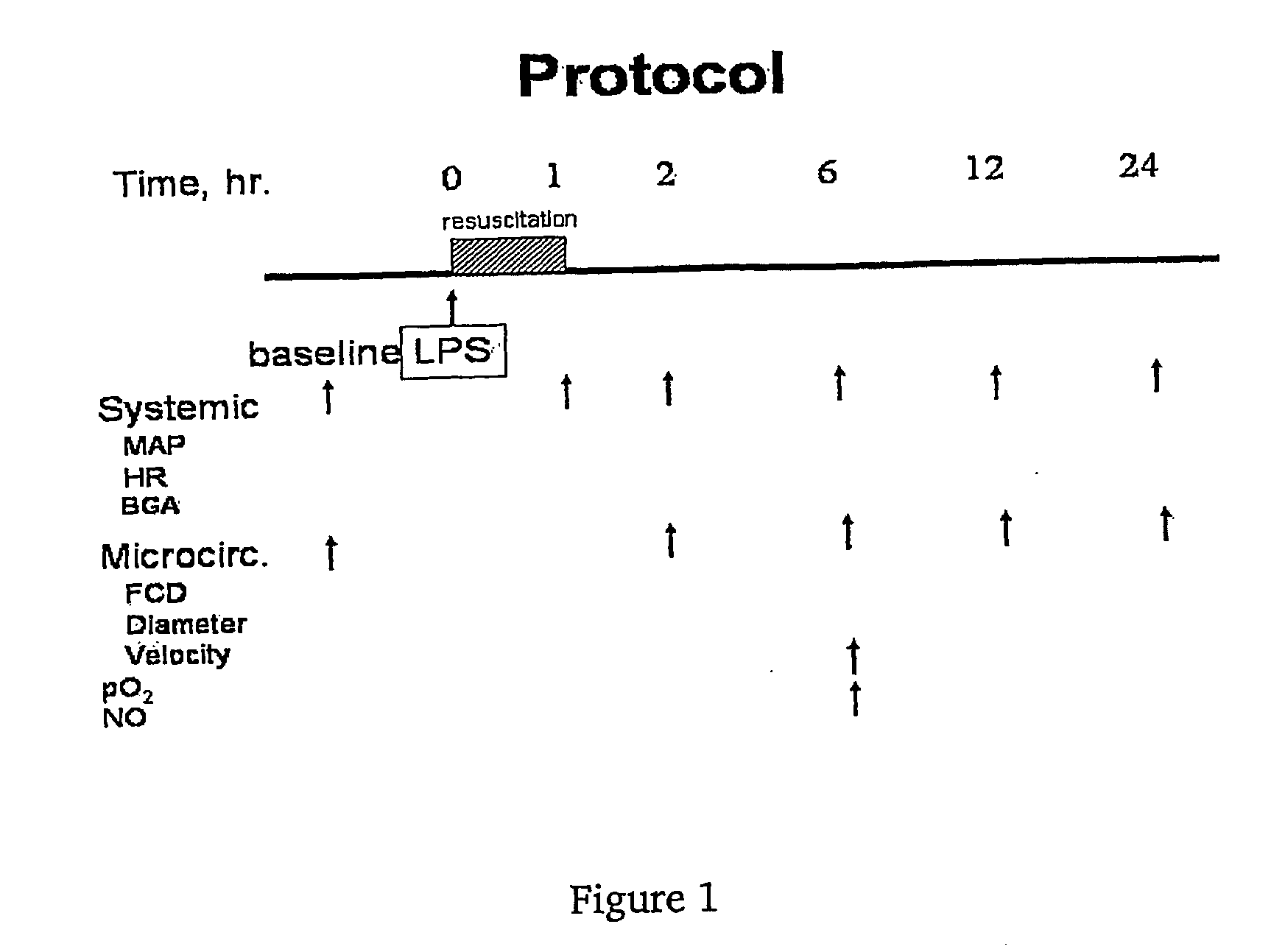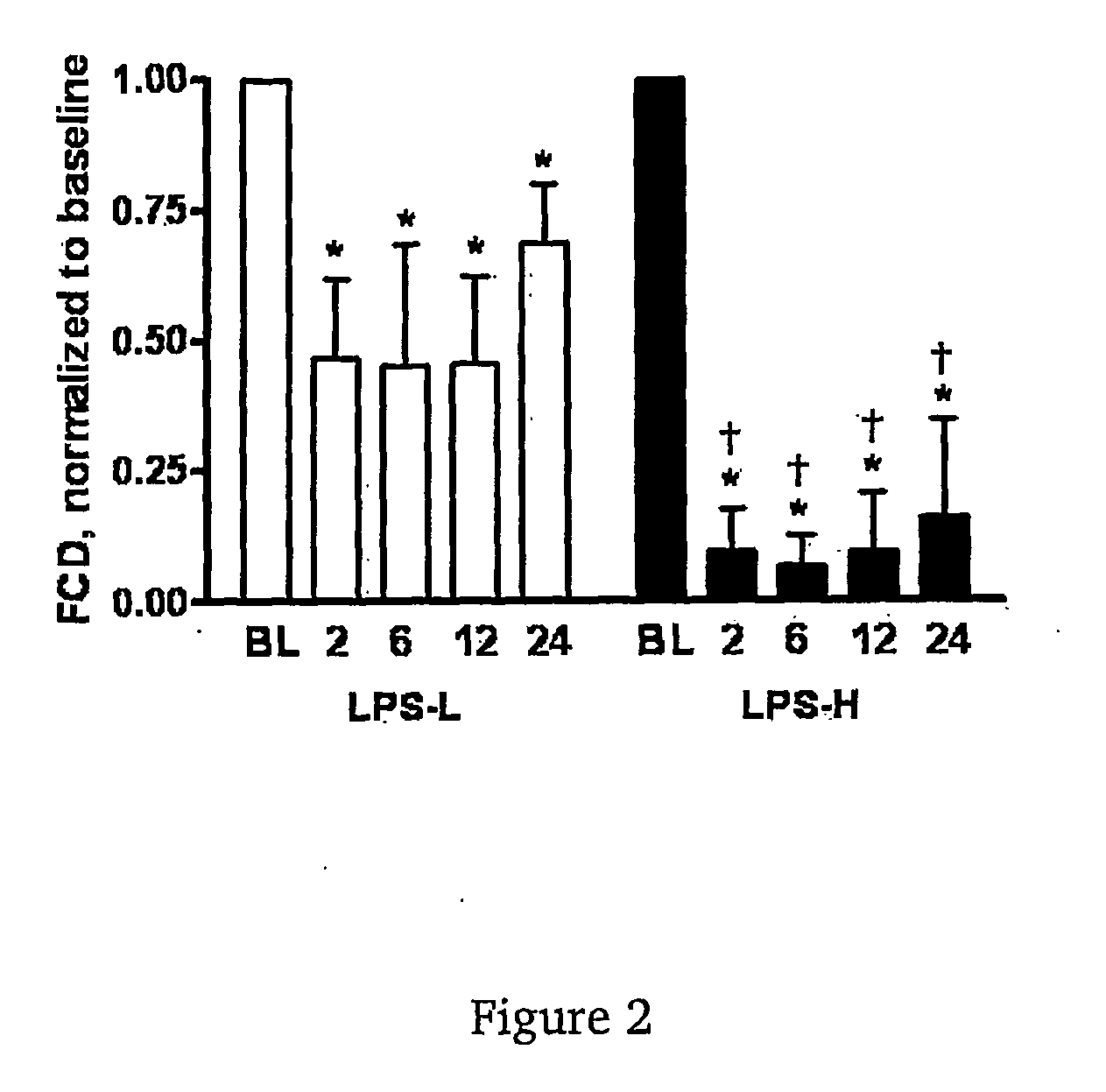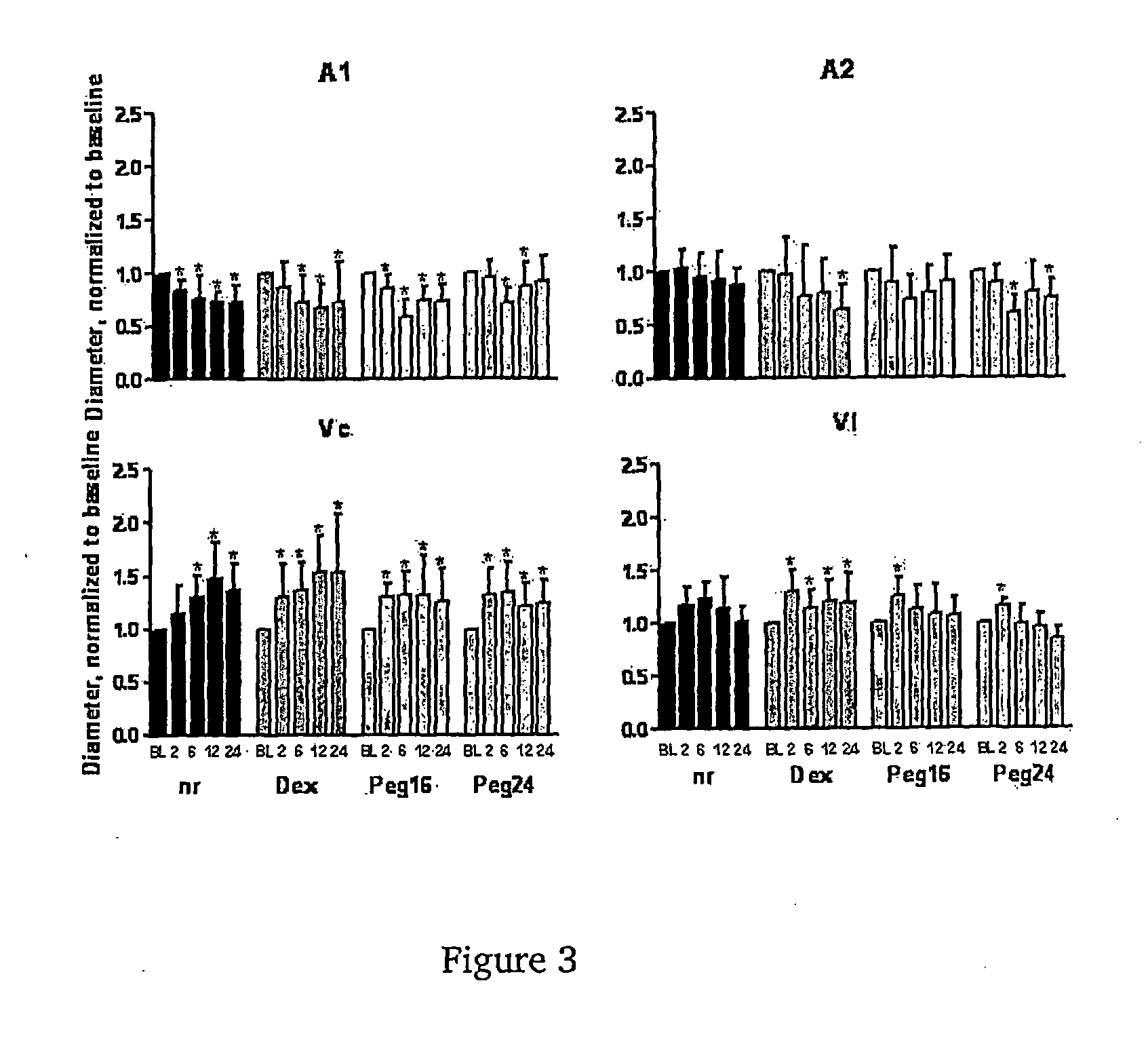Uses of pegylated albumin
a technology of pegylated albumin and pegylated albumin, which is applied in the direction of peptides, drug compositions, peptides/protein ingredients, etc., can solve the problems of poor blood flow, high morbidity and mortality, cumbersome and impractical monitoring of tissue changes during shock and resuscitation, etc., to reduce blood volume, and reduce functional capillary density
- Summary
- Abstract
- Description
- Claims
- Application Information
AI Technical Summary
Benefits of technology
Problems solved by technology
Method used
Image
Examples
example 1
Treatment of Endotoxemia Using Peg-Albumin
I. Introduction
[0055]The present study was carried out to test the hypothesis that recovery from endotoxemia according to the “VIP” approach is improved by restoring functional capillary density (FCD). Endotoxemia was induced by the administration of lipopolysaccharide (LPS) in a dosage that produced a maximal reduction in FCD, without being lethal. Hypervolemic infusion of PEG-BSA was used as a plasma expander, and compared with no treatment and with dextran 70 kDa treatment as a means of restoring FCD.
II. Materials and Methods
[0056]Animal Preparation. Investigations were performed in the golden Syrian hamsters (Charles River Laboratories, Boston, Mass.) window chamber model following guidelines in the Guide for the Care and Use of Laboratory Animals (National Research Council, 1996), and surgical techniques previously described (11), and approved by the local Animal Subjects Committee. Briefly, the chamber is positioned and implanted under...
example ii
Hemorrhagic Shock Resuscitation Using PEG-Albumin
I. Introduction
[0168]The present study was carried out using the cell-impermeant form of the H+-sensitive fluorochrome 2′,7′-bis-(2-carboxyethyl)-5,6-carboxyfluorescein (BCECF, Molecular Probes, Eugene, Oreg.) injected intravenously to assess tissue pH in the microcirculation of the hamster window chamber model subjected to a conventional hemorrhagic shock and resuscitation procedure. Resuscitation was performed using a volume infusion of 10% hydroyethylstarch (HES) 200 or 2.5% polyethylene glycol conjugated bovine albumin (PEG-Alb), materials with similar molecular weight but different colloidal osmotic pressure (COP).
II. Materials and Methods
[0169]Animal preparation. Investigations were performed in male Golden Syrian Hamsters fitted with a dorsal chamber window (20, 21). This model has been extensively used for investigations of the intact microvasculature of adipose and subcutaneous tissue and skeletal muscle in conscious animals ...
example iii
Cardiac Normalization Using Peg-Albumin
I. Introduction
[0255]Cardiac arrhythmias during anaesthesia and surgery occur in up to 86% of patients. Many are of clinical significance and therefore their detection is of considerable importance. As disclosed herein, intravenous infusion of PEG-Albumin has properties as a heart rate and cardiac output stabilizer, establishing the use of PEG-Albumin as a treatment for acute ventricular arrhythmias.
II. Methods and Results
[0256]The acute antiarrhythmic effect of PEG-Albumin was assessed using epinephrine-, digitalis-, microspheres injections- and calcium and potassium channels blocker-induced hamster ventricular arrhythmia models. Intravenous administration of PEG-Albumin (2.5% PEG-Albumin, 5% of blood volume) reduced the incidence of the ventricular arrhythmias in all models except for the calcium and potassium channel blockers. The antiarrhythmic effect on epinephrine-induced arrhythmia was potent and long-lasting, while those on the other ar...
PUM
| Property | Measurement | Unit |
|---|---|---|
| molecular weight | aaaaa | aaaaa |
| molecular weight | aaaaa | aaaaa |
| molecular weight | aaaaa | aaaaa |
Abstract
Description
Claims
Application Information
 Login to View More
Login to View More - R&D
- Intellectual Property
- Life Sciences
- Materials
- Tech Scout
- Unparalleled Data Quality
- Higher Quality Content
- 60% Fewer Hallucinations
Browse by: Latest US Patents, China's latest patents, Technical Efficacy Thesaurus, Application Domain, Technology Topic, Popular Technical Reports.
© 2025 PatSnap. All rights reserved.Legal|Privacy policy|Modern Slavery Act Transparency Statement|Sitemap|About US| Contact US: help@patsnap.com



